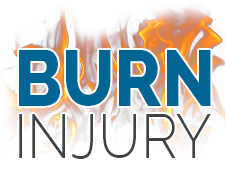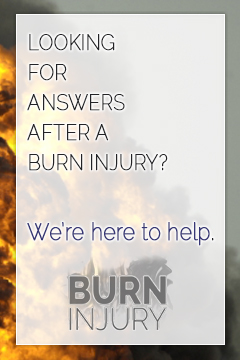After a Burn
Approximately 450,000 Americans seek medical treatment for burns each year. In many cases, what the patient does immediately after a burn can have a large impact on whether there are complications or permanent marks from the burns. Immediate treatment can also help prevent pain, relieving mental and emotional trauma. However, many home remedies that may be helpful for mild burns can cause harm if applied to severe burns.
Care after a Burn
Care that is immediately given after a burn is referred to as “on-site management.” The first thing that should be done in any burn situation is to remove the patient from harm’s way or heat. Once this has been done, the patient and any helpers on the scene should put out any flames that may be on the patient. After the threat is removed, the burns should be assessed to determine the next step.
Determine Burn Severity
Much of what comes next depends on the severity of the burn. If the patient is in a condition that may result in shock or unconsciousness, the patient should be laid down and an ambulance should be summoned. If the patient needs medical assistance, those on scene should immediately call for help, or transport the patient if the burns are on extremities or not as severe. If burns are mild, home remedies may suffice.
Cool Skin with Water
In most cases, water can be used to quickly cool the surface temperature of the skin. Cooling the skin with water can alleviate pain, lower the heat, and reduce swelling caused by histamines. This can severely decrease the permanent damage caused by burns. If burns cover 25 percent or more of the skin, however, water should not be used as it can cause the patient’s temperature to drop too fast and could cause hypothermia.
Prevent Infection
Covering burns may help to prevent infection. Bandages or dressing should be applied loosely, as tight bandages may tear skin when removed. Food wrap is a clean and sanitary dressing and poses little risk of tearing skin when removed, so it can be a good substitute in the absence of medical bandages. Salves or ointments may help for milder burns, but should not be used for more severe burns.
Techniques to Avoid
Certain remedies which were once thought to be helpful in caring for severe burns may actually be detrimental. Rolling on the ground to put out fire can cause unharmed areas of the body to catch fire, so a heavy blanket should actually be used to smother flames. Ice, cold water, and ointments can lower skin temperatures rapidly, putting burn victims at risk for hypothermia if burns cover large areas or are severe. Anything that makes it difficult to examine the wound may also inhibit medical professional’s ability to assess and treat the burn.
Sources:
“Burns.” Kids Health. Nemours, n.d. Web. 18 Dec 2013. <http://kidshealth.org/parent/firstaid_safe/emergencies/burns.html>.
“Burns.” University of Maryland Medical Center. University of Maryland Medical Center, n.d. Web. 18 Dec 2013. <http://umm.edu/health/medical/altmed/condition/burns>.
Shrivastava, Prabhat, and Arun Goel. “Pre-hospital Care in Burn Injury.” Indian Journal of Plastic Surgery. PMC3038405.September (2010): 15-22. Web. 18 Dec. 2013. <http://www.ncbi.nlm.nih.gov/pmc/articles/PMC3038405/>.













